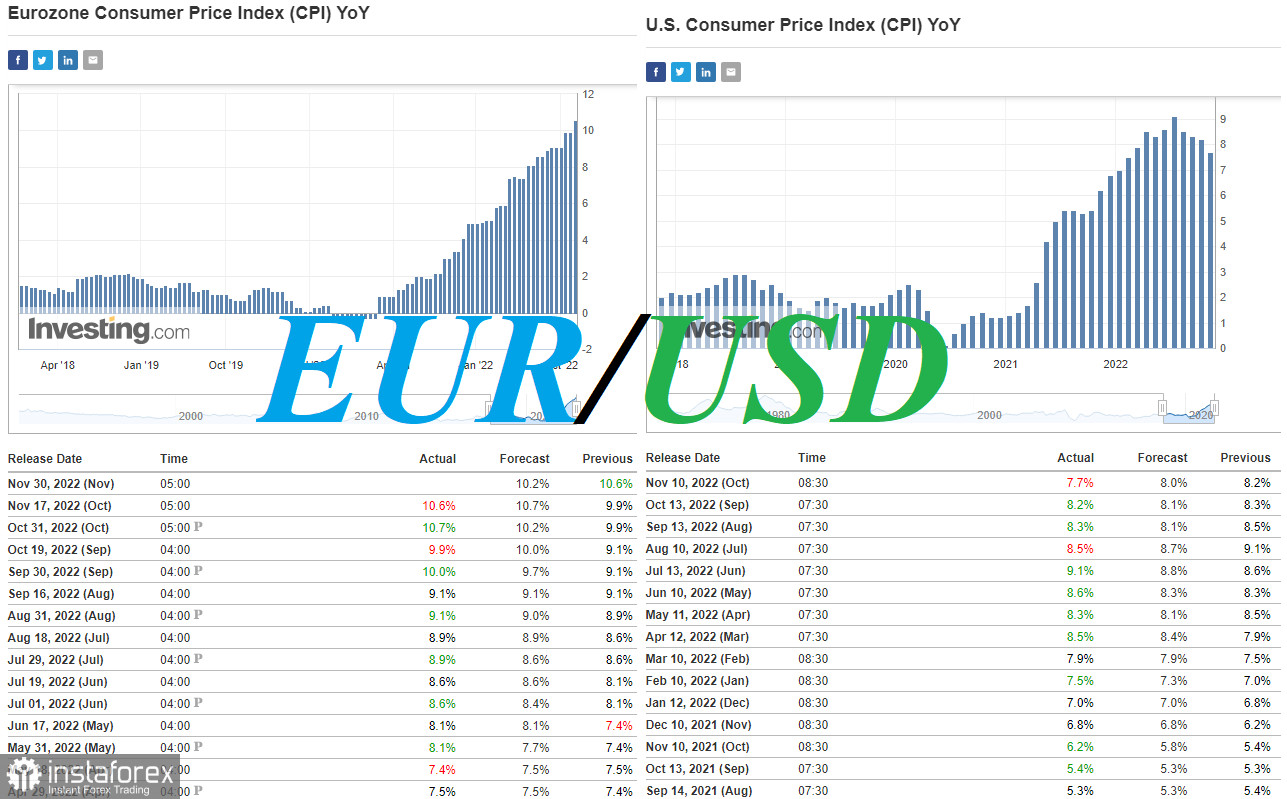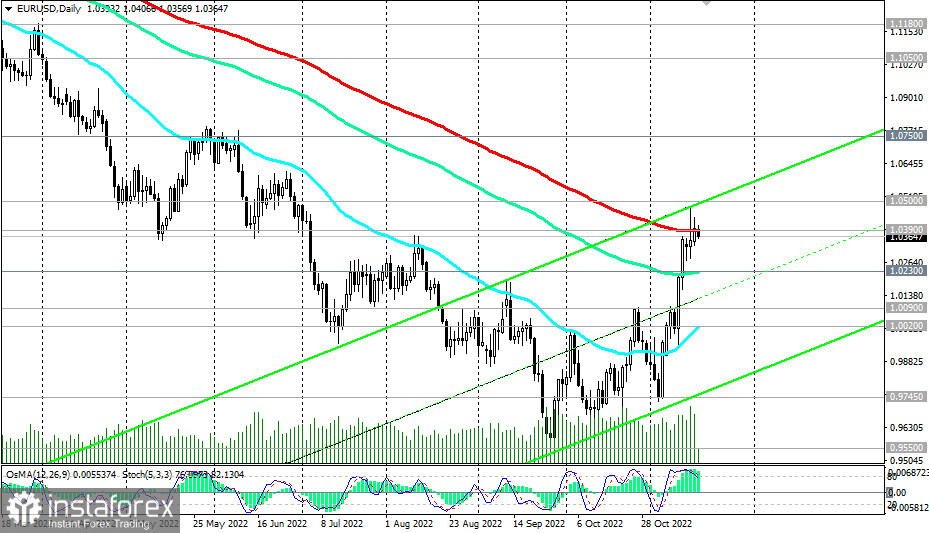High volatility continues to shake the markets, however, the fluctuations are getting smaller. The pair is accumulating energy like a spring. At the same time, many economists and observers are now saying that the recent dollar correction was too extreme.
The US dollar dropped sharply over the past few days following the release of lower-than-expected US inflation data last Thursday. The CPI data suggested inflation was slowing down.
The consumer price index (CPI) fell in October to 7.7% from 8.2% year-over-year, exceeding the forecasted decline to 8.0%. Core CPI declined to 6.3% y/y from 6.6% last month. Core inflation was expected to reach 6.5%.

The Fed's efforts to curb inflation in the US are definitely delivering results. This makes a slowdown of the pace of monetary tightening more likely.
Before the release of the inflation data, it was widely expected that the Fed would again increase the interest rate by 0.75% to 4.75% at the meeting in December (December 13-14).
Some Fed policymakers, such as Fed Vice Chair Lael Brainard and Governor Christopher Waller have already made some cautious statements that a slowdown in monetary policy tightening is possible in the near future.
However, according to the same Lael Brainard, inflation is still too high and there is still a lot of work to be done to return it to the target level of 2.0%.
According to many economists, the Fed and other major world central banks, in particular the ECB, are likely to start reducing their interest rate hikes simultaneously. This suggests that the dollar's downward correction could be winding down. The impact of monetary policy adjustments by the Fed and other regulators on the trajectory of the US dollar and other major currencies will be relatively neutral.
Then, the general economic situation in the world's major countries will be key, as well as geopolitical risks.
The situation in the United States is definitely better than in Europe. The EU is under threat from uncertainty in the energy market and a potential supply crunch. Inflation is even higher in the EU than in the US – according to the latest data published today, inflation in the eurozone reached 10.6% y/y in October, greatly above the 7.7% inflation reported in the US. The military conflict in Ukraine is likely to escalate. The European economy will suffer more than the American one due to these factors. If imports from Russia to Europe are completely stopped, it is unlikely that European manufacturers will be able to quickly find a new supplier. The resulting supply disruptions will hurt the European economy. This, however, is already happening on a smaller scale.
EUR/USD was trading near the 1.0365 mark at the moment of writing, again failing to overcome the key resistance level of 1.0390.

EUR/USD remains below the resistance level of 1.0390. However, to resume the downtrend, the pair needs to break through the support level of 1.0230. Below these levels, opening short positions remains the best course of action for traders.
Today, EUR/USD volatility will increase again at 13:30 GMT. Today, the US Department of Labor publishes a weekly report on the state of the US labor market with data on the number of initial and continuing jobless claims. The state of the labor market, together with data on GDP and inflation is a key gauge used by the Fed to determine its monetary policy. The number of initial and continuing jobless claims is expected to remain at pre-pandemic levels. This would indicate the stability of the US labor market and would be a positive factor for the US dollar.
 English
English 
 Русский
Русский Bahasa Indonesia
Bahasa Indonesia Bahasa Malay
Bahasa Malay ไทย
ไทย Español
Español Deutsch
Deutsch Български
Български Français
Français Tiếng Việt
Tiếng Việt 中文
中文 বাংলা
বাংলা हिन्दी
हिन्दी Čeština
Čeština Українська
Українська Română
Română

